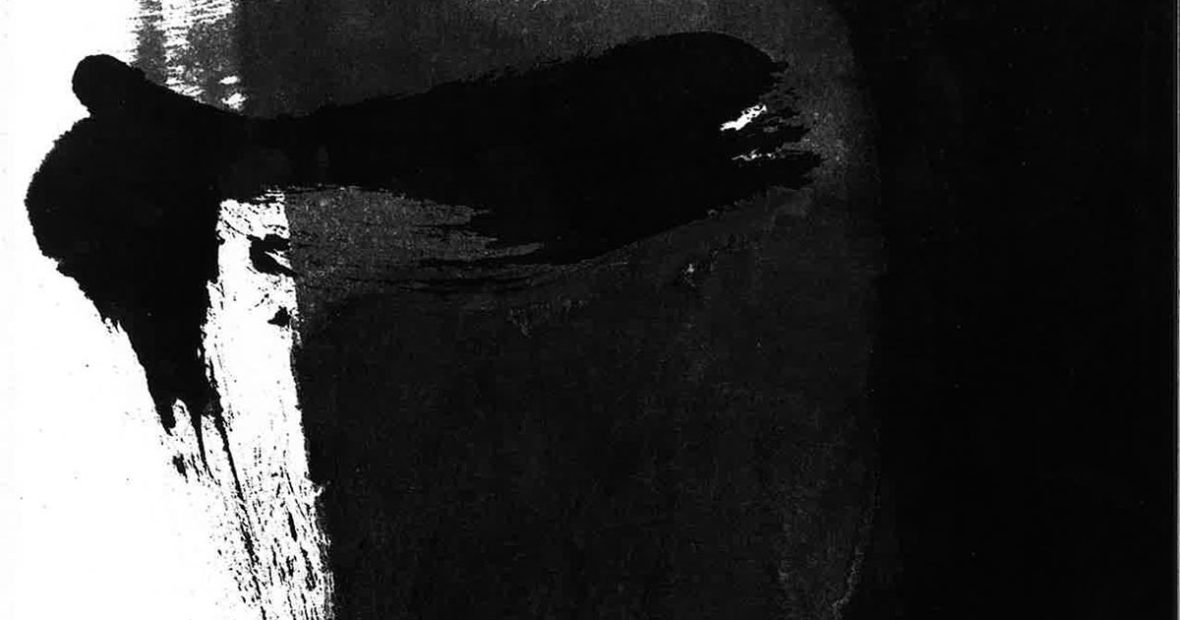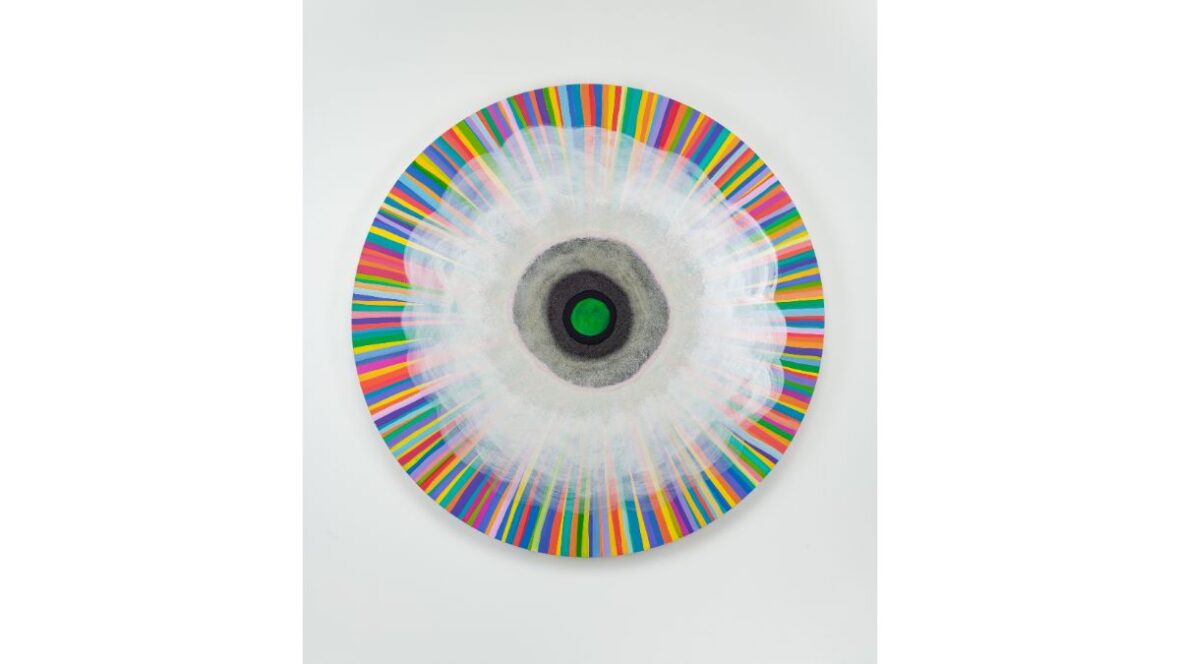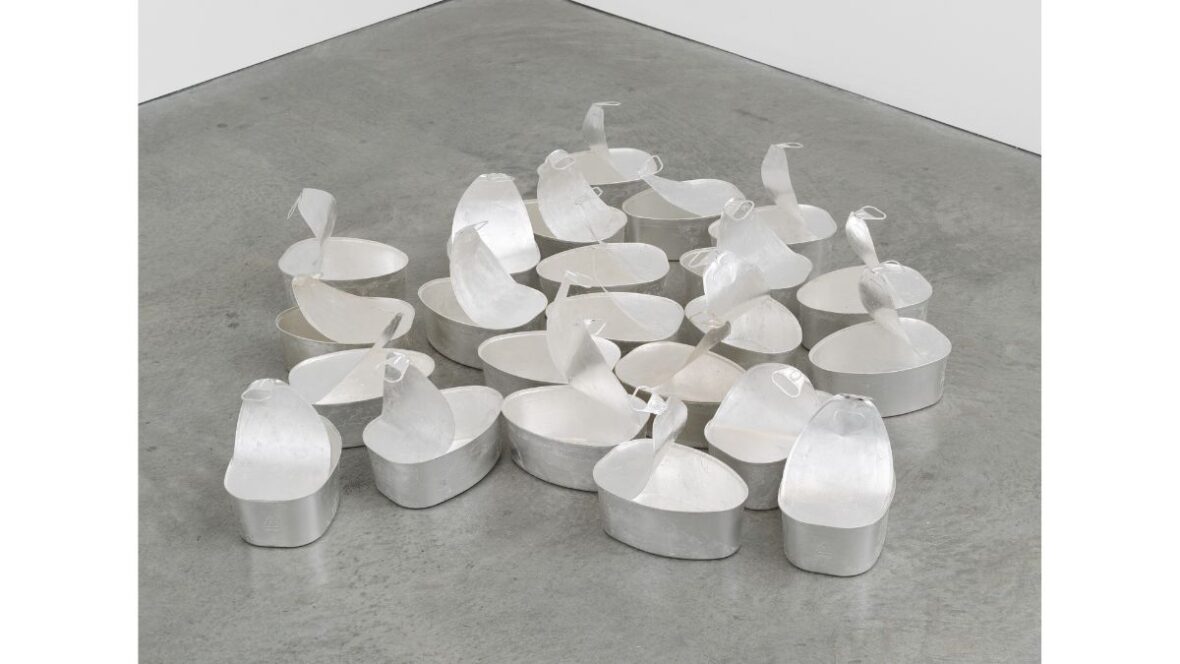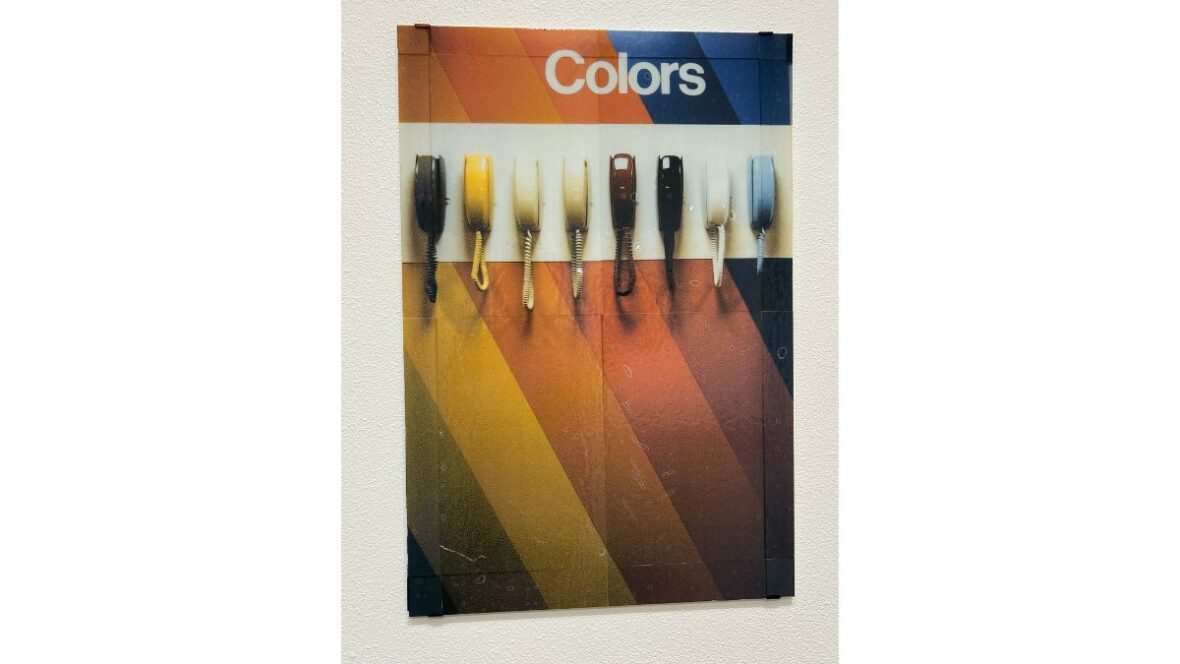Hilda Morris, Counterpoint:
Black and White Sumi Paintings

Exhibition Overview
Hilda Morris’s sculpture is well-known, particularly in the Pacific Northwest where she lived until her death in 1991. Eloquent essays by Robin Skelton, Carolyn Kizer, and Rachael Griffin, among others, are evidence of the extent to which her sculpture attracted the attention of poets and critics. Her work in sumi, which played a significant role in her creative life, is less well-known. Morris’s first concentrated use of sumi occurred over a four- or five-year period from 1958 to 1962, and though she continued to draw with sumi from time to time during that interval, it had only been during the last few years before this exhibit that she began to work with it again on a sustained basis.
The intensity she brought to this renewed involvement with the medium was apparent at once to anyone who saw this exhibition. All the works included here had been created within the last few years before the show, and they were forceful in a way that could never be said of the softer, more atmospheric sumis of the late fifties and early sixties. And yet those works too have a quiet intensity of their own, and there can be no mistaking that they are by the same hand.
This raises an interesting point about Morris’ work: it is of a piece in a way that is seldom true of the work of other artists. While her work evolved over the years, moving in directions that would have been impossible to foresee at the outset, there were no abrupt changes in style; each new phase of her work grew organically from the preceding phase. One has the feeling that this was an artist who definitely knew her own mind, that she always had a very clear sense of her own artistic mission. This is not to suggest that she found the creative process particularly easy-in fact, she described it as “a search” -but it does suggest that when she struck fire, she recognized it.
There is a numinous quality to much of Morris’s work. Perhaps this is because it is rooted in an awareness of universals that gives it a sense of monumentality that has nothing to do with literal scale. This is as true of what she did in the early 60s as it is of what she was doing before this exhibition, and it is as true of her sumis as it is of her sculpture.
Morris had a cast of mind that made her particularly responsive to poetry. Many of her friends were poets; and she often expressed herself in metaphors. Like poets, too, she believed firmly in the existence of hidden correspondences, of unknown or only half glimpsed relationships that can link even the most disparate seeming occurrences. This unswerving belief in the essential mystery of things-the rootedness of the particular in the never-totally-knowable universal-was central to Hilda Morris’s art. Her preferences were invariably for process over product, the emergent over the full-blown.
In both her speech and her art, Morris was highly articulate; she used symbols and metaphors deliberately and with a keen sense of how readily they can be misused, to exclude rather than include, to trap thought rather than liberate it. She preferred to leave room for awakening associations and stirring the imagination.
I have already mentioned Morris’ belief in “hidden correspondences.” In talking about the works in this exhibition, she frequently alluded to such correspondences, and particularly to the relationship she perceived between people-specific individuals, in fact and certain landscapes. The viewer, unfamiliar with her work, may see none of this at first; but even if, once given the clue, one begins to make out heads, shoulders, or perhaps entire standing figures, there is nothing to prevent such images from dissolving, the shoulder becoming a rounded rock, the face a halo of light. There is nothing wrong with this either. It is all lost certainly as the artist would have it.
Would a viewer unfamiliar with Morris’ background and seeing this exhibition for the first time have any reason to suspect that the artist was primarily known as a sculptor? Probably not. Morris’ use of the sumi medium was so masterful and the works are so complete in themselves, so satisfying in their own terms, that there is no reason to think of them in relationship to sculpture. Yet for those who do know the artist’s work as a sculptor, there is a clear relationship. The rich, mottled surfaces, the mysterious clefts, the socket and blade-like forms are all present in her bronzes. Beyond that, something in the very strength of these drawings, their sense of structure, allies them to sculpture. The brushstrokes are so firmly planted, they thrust and tilt with such energy, that they seem to acquire an almost three-dimensional presence.
One final comment: though the medium the artist had employed, sumi, is Japanese in origin, and the paper, too, is Japanese, there is nothing really Oriental about these works. Though an occasional glyph-like form may be reminiscent of certain bold examples of Far Eastern calligraphy-and though undoubtedly an affinity existed at some level-Morris’s artistic roots were ultimately Western in origin. If through her explorations of sumi she had become a master of what Sherman Lee called “the colors of ink,” that was her own accomplishment.
Donald Jenkins
Director
Portland Art Museum
Artists
Hilda Morris



